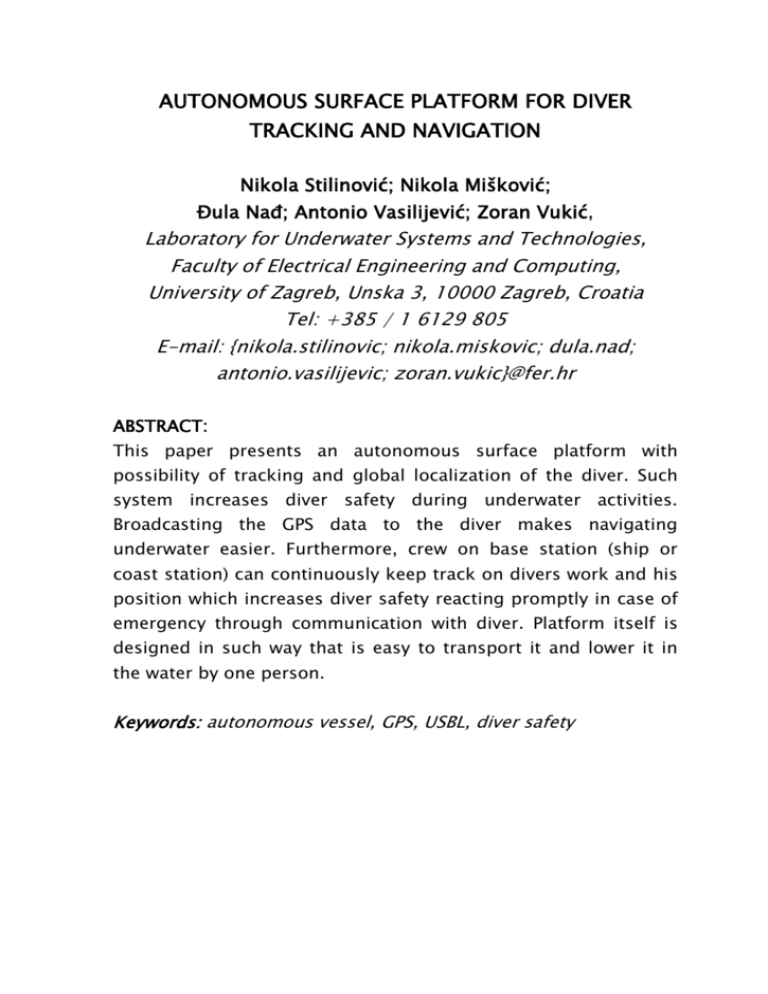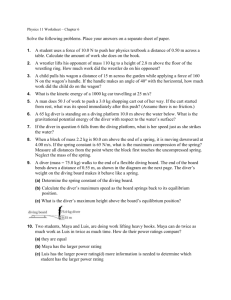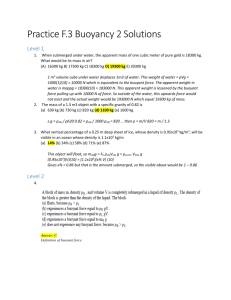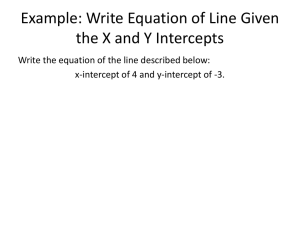Autonomous surface platform for diver tracking and navigation
advertisement

AUTONOMOUS SURFACE PLATFORM FOR DIVER
TRACKING AND NAVIGATION
Nikola Stilinović; Nikola Mišković;
Đula Nađ; Antonio Vasilijević; Zoran Vukić,
Laboratory for Underwater Systems and Technologies,
Faculty of Electrical Engineering and Computing,
University of Zagreb, Unska 3, 10000 Zagreb, Croatia
Tel: +385 / 1 6129 805
E-mail: {nikola.stilinovic; nikola.miskovic; dula.nad;
antonio.vasilijevic; zoran.vukic}@fer.hr
ABSTRACT:
This paper presents an autonomous surface platform with
possibility of tracking and global localization of the diver. Such
system increases diver safety during underwater activities.
Broadcasting the GPS data to the diver makes navigating
underwater easier. Furthermore, crew on base station (ship or
coast station) can continuously keep track on divers work and his
position which increases diver safety reacting promptly in case of
emergency through communication with diver. Platform itself is
designed in such way that is easy to transport it and lower it in
the water by one person.
Keywords: autonomous vessel, GPS, USBL, diver safety
AUTONOMNA POVRŠINSKA PLATFORMA ZA PRAĆENJE I
NAVIGACIJU RONIOCA
Nikola Stilinović; Nikola Mišković;
Đula Nađ; Antonio Vasilijević; Zoran Vukić,
Laboratorij za podvodne sustave i tehnologije,
Fakultet elektrotehnike i računarstva,
Sveučilište u Zagrebu, Unska 3, 10000 Zagreb, Hrvatska
Tel: +385 / 1 6129 805
E-mail: {nikola.stilinovic; nikola.miskovic; dula.nad;
antonio.vasilijevic; zoran.vukic}@fer.hr
SAŽETAK:
Ovaj rad prikazuje autonomnu površinsku platformu s
mogućnošću praćenja i globalne lokalizacije ronioca. Takav
sustav povećava sigurnost tijekom podvodnih aktivnosti.
Prijenosom GPS podataka prema roniocu znatno se olakšava
snalaženje u podvodnom svijetu. Nadalje, osoblje na baznoj
stanici (brodu ili obalnoj stanici) može kontinuirano pratiti rad
ronioca, njegovu poziciju i dodatno povećati sigurnost ronioca
kroz pravovremenu reakciju u slučaju opasnosti kroz
komunikaciju s roniocem. Sama platforma je dizajnirana tako da
je omogućen lagani transport i polaganje platforme u vodu od
strane jedne osobe.
Ključne riječi: autonomno plovilo, GPS, USBL, sigurnost ronioca
1. INTRODUCTION
Demand for small marine platform in marine robotics is very high,
and its construction takes big part in whole project of creating an
autonomous vessel. This one-man-portable platform is designed
to be used on sea and lake for numerous guidance applications,
e.g. dynamic positioning, path following, virtual target algorithm,
etc. Platform's main task is diver tracking offering him global
position underwater and communication with the ground station.
The platform is designed and developed at the Laboratory for
Underwater Systems and Technologies (LABUST) by a group of
students on master program. It’s made from polyester resin and
some technical characteristics are shown in Table 1. The platform
is actuated by four SeaBotix® thrusters positioned in such a way
that they form an x-shaped configuration as shown schematically
in Figure 1b) what allows the design of complex guidance and
control algorithms, especially dynamic positioning algorithm. The
platform is equipped with single board computer, USBL, GPS, IMU
and WiFi which allow autonomous work with other vessels or
divers and manual control by operator from the ground station.
As LABUST already developed two platforms for testing in the
pool in laboratory conditions [2], the main motivation for building
this type of a platform was to construct the platform which could
be tested in real and harsh environment in which marine vehicles
operate, characterized with unpredictable disturbances (waves,
winds and currents) and to assist divers in underwater navigation
and communication with the ground station. Further on, the
developed platform will be used in cooperative guidance of
unmanned underwater or surface vehicles. This application would
allow more precise underwater localization and online mission
replanning. This research is divided into four steps:
• Step 1 includes the design and construction of the small
overactuated marine platform and acquisition of navigation
devices;
• Step
2
includes
integration
of
navigation
devices,
communication with ground station and software testing
[3];
• Step 3 includes the design and implementation of
algorithms for dynamic positioning, path following, virtual
target, etc. [4]:
• Step
4
includes
USBL
integration,
construction
of
underwater case for tablet and development of Android
application.
a)
b)
Figure 1 a) Virtual model of the platform for dynamic positioning
and b) x-shape actuator configuration
Step 1 was successfully ended in July 2011. and platform was
ready for testing in pool conditions Figure 2. Step 2 and 3 ended
in July 2012. This paper presents the final step in research
activities. It also presents how connection is established between
platform, ground station and other vessels or divers. The results
presented show that proposed navigation and communication
devices can be used on a real system in real-time environment.
Table 1 CHARACTERISTICS OF THE PLATFORM
Height [m]
0.45
Width [m]
0.707
Length [m]
0.707
Weight [kg]
≈ 25
The paper is organized as follows. Section II describes general
information about all devices used in platform. Section III
describes underwater system for navigation and communication.
Section IV gives short overview of Android application used in
underwater tablet. Section V presents preliminary results. The
paper is concluded with Section VI.
Figure 2 Autonomous platform for dynamic positioning
2. DEVICES USED IN PLATFORM
Platform is powered with 21Ah 18.5V battery which powers all
electrical devices. Single board computer with ROS [1] is in charge
of performing control and guidance tasks. Apart form the
batteries and CPU, the platform is equipped with:
9 DOF IMU for heading, roll, pitch and yaw measurements;
a GPS for determining the platform position, and indirectly
the diver position in the horizontal plane;
Ultra Short Baseline (USBL) used to determine the position
of the diver relative to the platform. The USBL is used
simultaneously for localization and two-way data
transmission via an acoustic link
a wireless modem used to transmit data from the platform
to the surface station, thus making the platform a router
from the diver to the surface station where the diving
supervisor is stationed.
3. UNDERWATER
SYSTEM
FOR
NAVIGATION
AND
COMMUNICATION
PlaDyPos underwater communication system consists of Figure 3:
USBL Transducer (MicronNav, Tritech);
Modem Head (Micron Data Modem, Tritech);
Battery (MetalSub, 12 V, 4 Ah);
RS232-Bluetooth module (LM048, LM Technologies);
Tablet (Samsung Galaxy Note 10.1).
USBL Transducer is connected to embedded computer which
exchanges messages with the modem. Modem Head and
Bluetooth module are powered with 12V battery. Modem Head
communicates with Bluetooth module via RS232 which then
wirelessly communicates with the tablet, i.e. with an Android
application. The underwater part of the system is simply powered
on by connecting the battery pack.
PlaDyPos
USBL
Tritech
modem
RS232
Bluetooth
module
Tablet
Battery
Figure 3 Underwater Communication System
4. ANDROID APPLICATION
Android application is divided in three tabs:
Map tab
Communication tab
Ascent tab
4.1. Map tab
Map tab is divided in two fragments as shown in Figure 4. Bigger
fragment on the left side is Google Maps which shows position of
the diver and can also show markers from .kml file connected
with lines which form a path. Map also features three concentric
circles indicating 5, 15 and 30 meters radius around the diver.
User can manually add markers and rearrange them in different
order through the smaller fragment on the right side of the
screen. There are various buttons with following assignments:
Alert - red button in tab bar sends alert message to
platform, i.e. to ground station; this button is available on
every tab due to its emergency features;
Draw path - draws path among the markers added on
map;
Clear all - clears all markers and all paths;
Add Mode - when in add mode, user can add markers with
short click on map and also delete them with short click on
existing marker on map; added markers are shown on the
bottom of the screen;
Ascent - Ascent tab is opened by selecting this button;
Show position - when diver position is outside of map
shown on the screen, clicking on this button positions the
map on the diver’s position.;
Zoom ± - zooms the map;
Up, Down - order of the markers added can be changed by
selecting the desired marker from array on the bottom of
the screen and pressing the Up or Down button.
Figure 4 Diver Assistant application, Map tab
On the right side of the screen there is also an information about
current dive time and estimated maximum dive time which is
calculated using the depth and time spent under water. Current
depth is displayed in the upper left corner on the tab bar. Depth
can be acquired through the USBL or via optional depth sensor.
4.2. Communication tab
Communication between diver and ground station is conducted in
two ways. User can type custom message or send predefined
message. On the right of the tab bar there is red alert button and
next to it there are two buttons for starting the Bluetooth
connections: first one opens the communication with modem, i.e.
USBL system and the latter opens the communication with
optional depth sensor. User can write a custom message by
clicking on the line on bottom left part of the screen which
inflates the virtual keyboard. After clicking the send button on
virtual keyboard, message is saved to queue and ready to send
via Bluetooth and USBL to the ground station when ground station
requests it. Sent messages appear in upper left part of the screen
and received messages from ground station are shown in bottom
left part of the screen (Figure 5Error! Reference source not
found.). Predefined messages can be sent by clicking on the list
of predefined messages in center left part of the screen.
Messages are saved in queue as were clicked with exception of
Alert message which is always set on top of the queue.
Figure 5 Diver Assistant application, Communication tab
Buttons on this tab are:
Close App - back button is disabled because it shares
position with hide keyboard button so there is risk of
closing the application accidentally and therefore Close
App button is added to securely close application;
Take Picture - takes pictures from front or back camera;
Take Video - takes video from front or back camera;
Reboot - reboots the modem if communication with
ground station stops.
4.3. Ascent tab
Instead of separate diving computer, this tab shows critical
information about decompression stops which are crucial for
diver safety (Figure 6). Considering divers depth, application
calculates time available for diver to be on current depth which is
shown on Map tab. On the left side of the screen is the table with
decompression stops depth and time needed to stay on that
depth for safe ascent.
Figure 6 Diver Assistant application, Ascent tab
On the right side of the screen is stopwatch for measuring time of
particular decompression stop. There is also an information about
current depth and overall dive time.
5. RESULTS
The results from testing at sea are visible in Figure 7. Bearing
in mind that navigation works at frequency of 0.25 [Hz] and that
sometimes USBL gives no data or calculates wrong data due to
reflection and multipath effects of acoustic waves.
Figure 7 Platform path and diver estimate
6. CONCLUSION
The work presented in this paper has demonstrated that the
concept of using an autonomous surface platform for diver
tracking is feasible. Based on USBL measurements aided with GPS,
diver position, speed and orientation can be estimated with
sufficient precision.
ACKNOWLEDGEMENTS
This work is supported by the Business Innovation Agency of the
Republic of Croatia (BICRO) through the Proof of Concept
programme. The authors are with the University of Zagreb,
Faculty of Electrical Engineering and Computing, LABUST Laboratory for Underwater Systems and Technologies, Unska 3,
Zagreb, Croatia nikola.stilinovic at fer.hr
REFERENCES
[1] http://www.ros.org.
[2] N. Miskovic, Z. Triska, D. Nad and Z. Vukic. Guidance of Small
– Scale Overactuated Marine Platform – Experimental Results.
Proceedings of the 34rd International convention on information
and communication technology, electronics ad mircroelectronics
MIPRO 2011, CTS, 2011.
[3] N. Stilinovic. Integration of the Navigation Module in the
Laboratory Platform for Dynamic Positioning, B.Sc. thesis, 2010.
[4] Z. Triska, N. Miskovic, D. Nad and Z. Vukic. Virtual Target
Algorithm in Cooperative Control of Marine Vessels, Proceedings
of the 35rd International convention on information and
communication technology, electronics ad mircroelectronics
MIPRO 2012, CTS, 2012.





